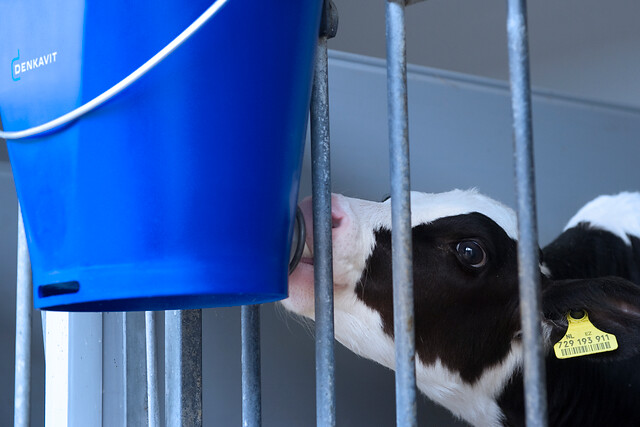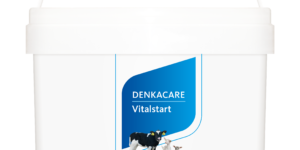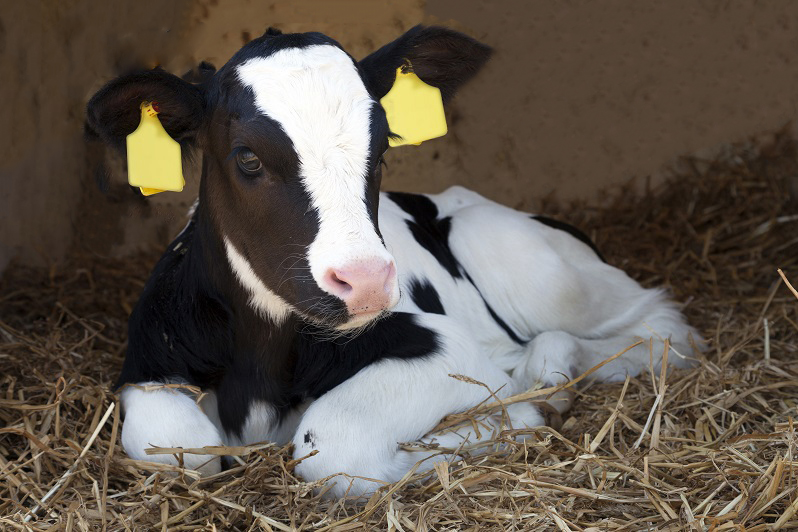New industry standards on successful colostrum management
More and more attention is put towards the successful raising of dairy heifers not only on farms but also in research. One of the most important parts of dairy heifer raising is colostrum management. Transfer of passive immunity via the colostrum is essential to ensure a healthy and well-performing calf.
IgG levels of mortality
Already in 1983, the limit of successful passive transfer was set to 10 grams of IgG per litre of serum, tested within 1 to 7 days of age. This limit has become the industry standard to measure the effectiveness of colostrum management on farms. Multiple studies have shown that this cut-off point is valid for predicting the mortality of calves. Calves with an IgG level below 10 g/L have a higher chance to be lost before calving compared to calves with a higher level of circulating IgG. In the article of Lombard et al. (2020) a group of renowned calf researchers and specialists propose
a new standard to evaluate colostrum management on individual calf and herd levels. Based on the data from NAHMS Dairy (2014) Calf Component four categories were determined and statistically proven: Excellent ≥25.0 g/L, Good 18.0-24.9 g/L, Fair 10.0-17.9 and Poor <10.0 g/L IgG.
They noticed a clear reduced mortality rate when calves were categorised as Poor vs. Fair but also a lower mortality rate was seen in Fair vs. Good. Also, morbidity rates improved with increasing IgG levels. Even between the categories Good and Excellent, a significantly lower morbidity rate was seen. These analyses show that there is a lot to gain when a four-category system is used, as compared to simply one cut-off point, to evaluate colostrum management and to strive for excellence when it comes to your colostrum management. At a herd level, they proposed, as a standard, that more than 40% of the calves should be in the Excellent category, 30% in Good, 20% in Fair and only less than 10% in Poor.

Is the level of excellence hard to achieve?
According to the article, it is not too difficult. Of the 2,360 calves included in the study 705 calves (30%) had an IgG concentration above 25.0 g/l. What these calves had in common is that they got fed good quality colostrum (BRIX of ≥26) fast after birth (on average <3 hr after birth). Subsequently, these calves got fed with either 287 g of IgG in one feeding or 421 g of IgG in multiple
feedings on the first day of life. When you have good quality colostrum available of >70 g of IgG per litre (equivalent to a BRIX value of 23), a single feeding of 4L or 3 × 2L could already be sufficient to set your calves up for an excellent start!
Colostrum is more than a source of IgG
We all know that colostrum is more than just a source of IgG. It contains proteins and energy but more importantly, it contains multiple bioactive components like immune cells, growth hormones and oligosaccharides that will help kick start and develop the calf’s immune system, digestive tract and metabolic system. However, these non-IgG substances are hard to measure. Therefore, the IgG status (or Total Protein level, such as we do in Program Calf) of your calves might be a good way to start measuring and evaluating the effectiveness of your colostrum management.
Colostrum management
Denkavit recommends feeding good quality (BRIX of ≥22) maternal colostrum and to prolong the colostrum feeding for 3 days before switching to a milk replacer. Lately, research has shown that prolonged (3 days) colostrum or transition milk feeding promoted intestinal maturation and development in neonatal calves (Pyo et al., 2020). Feeding colostrum or transition milk for a longer
period might therefore be beneficial for the calf’s health, not only from a transfer of immunity point of view. Research also indicates an extra beneficial effect of feeding maternal colostrum because of the transfer of maternal colostral immune cells from the dam to the neonate, enhancing and stimulating immune responses (Godden, 2008). If you do not have good quality (maternal) colostrum
available a colostrum enhancer or replacer based on dried bovine colostrum (f.e. Vitalstart) can be an alternative. If questions remain regarding your colostrum management, feel free to contact us.
References
- Godden, S. (2008). Colostrum management for dairy calves. Veterinary Clinics of North America: Food Animal Practice, 24(1), 19-39.
- Lombard, J., Urie, N., Garry, F., Godden, S., Quigley, J., Earleywine, T., … & Smith, G. (2020). Consensus recommendations on calf-and herd-level passive immunity in dairy calves in the United States. Journal of Dairy Science.
- Pyo, J., Hare, K., Pletts, S., Inaba, Y., Haines, D., Sugino, T., … & Steele, M. (2020). Feeding colostrum or a 1: 1 colostrum: milk mixture for 3 days postnatal increases small intestinal development and minimally influences plasma glucagon-like peptide-2 and serum insulin-like growth factor-1 concentrations in Holstein bull calves. Journal of Dairy Science.
Click here for our colostrum protocol
Download info on the DIGITAL MILWAUKEE REFRACTOMETER
Get your personalised advice and leave your details to get in contact with us!
Contact form - Small







